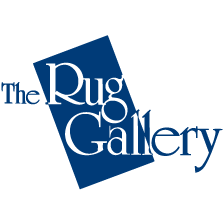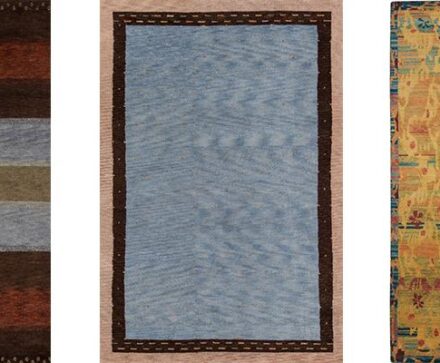The Most Expensive or Collectible Rugs
Floor coverings vary widely and there’s generally something for everyone. Collectible rugs used to be quite popular, especially for true collector types, but is that trend waning? Here’s what you need to know about expensive and collectible rugs.
John Maher: Welcome to the Rug Gallery with Sam Presnell. The Rug Gallery is an oriental rug company and carpet store in Cincinnati, Ohio. I’m John Maher and I’m here with the owner of The Rug Gallery, Sam Presnell. Hi, Sam.
Sam Presnell: Hi, John.
Expensive & Collectible Rugs
John: So today, we’ll be talking about the most expensive or collectible rugs. Sam, what are some of the most expensive or collectible rugs that are available today?
Sam: What I’m going to tell you is basically it’s all over the place and there’s a lot of things that you might be shocked when you hear what is collectible and what is bringing top dollar. Basically, I’ve followed the auction sites on antique rugs and things of that nature. I always try to see what’s selling worldwide. It may be different in your area, Cincinnati may be different than it is in Boston. Basically, there are certain types of rugs. One of the things that kind of surprised me to see was a product called Suzani. Suzani is actually an embroidered piece. So when you’re thinking of a rug, you don’t necessarily think of an embroidery piece as a rug, but it can be used as a rug. A lot of times it’s used as a coverlet on a bed or stretched on a wall. The majority of these collectors I believe are using this type of product on the wall. Really, in the old days when they made Suzanis, they were made as kind of like a dowry rug, where you would basically sew it and save it for your wedding bed or whatever you want to call it. That was kind of a real popular thing, but they’ve become very, very collectible and very sought after. A lot of them have what I call ikat designs, which are more variegated designs with a lot of geometrics and it really fits in with today’s transitional look. It has that “old tribal” stuff behind it, history-wise, but the colors and the designs don’t have the traditional borders to it and people are really getting gaga about it. I look at it and I’m shocked at how collectible it is. Another product is probably not very well known out there if you think about oriental rugs, is a product called Khotan. Khotan is actually an area in Northern China at the Russian and Afghan border. That’s an oasis town basically along the old silk road, back in the days, when they would do the camel routes through Asia into China to pick up the silk and on the way back, they would trade with the different tribes that would be across the north of Afghanistan, Kazakhstan, China, Mongolia, and they would trade for different wares and things like that. There was an influence there, basically the Afghan tribal designs, which are very popular today as well, but also a few of that Chinese silk stuff. Most of the population is, over different years of wars, are Muslim or Islamic in their beliefs, and there’s a lot of sheep herding and nomadic tribes in that area as well. So, there’s a real cross between their designs as far as having a tribal look with a Chinese twist to it. It’s kind of really a cool rug. I absolutely love them. The colors are a bit more modern, and I think that’s what’s made them so popular. It’s not the traditional oriental rugs you see everywhere.
Tribal Rug Designs
John: What are the sort of the designs of a tribal rug?
Sam: I would say it’s got some geometric-ness too it. I’d say it has more rounded lines to it, it has more of a floral-ness to it. You’ll have like a Chinese key or a fret border to it, which is kind of not seen in Persian carpets or tribal rugs. So you’ll see some of that influence of some of the tribal designs, and then you have that Chinese flair of different symbols and motifs that you would find in the Chinese carpets. It’s really hard to explain, but if you go online and you put that Khotan, which is actually the little city in that area where the oasis was that they traded at, and you’ll find the styles. It’s very mixed and there’s all kinds of designs there, just like Persian rugs. There are many, many designs. I think they’re very exciting rugs and they’re very coarse, not very fine, but very collectible. Some are under 7′ x 10′ in size, they’re not like a room size rug. There’s not a whole lot of them around, just because they weren’t used and they weren’t expensive in the old days, and there wasn’t a whole lot of them around. The other types are what I would call the Kazaks, the Karabaghs, which is basically again, more of that tribal type of geometric [design.] A lot of people say it’s more of a Southwestern looking rug and has more of that “Indian” influence. Basically, I think we all know that the Indians probably came across to Asia from those tribes, so there’s a lot of similarities to the symbols and the way that they executed their designs. Kazak rugs again are very small rugs, they’re nomads, they would flat weave their rugs in looms and then pick them up and move them, so they didn’t make big, big rugs. Most of them are under 7′ x 10′ or 5′ x 7′ in size. You find one with really great coloring and in good shape and everything, they’re bringing unbelievable per square foot dollars in the collection market as well. Karabaghs are also from that era. A karabagh is a very unique situation as well, because I think that’s why people are collecting is that you get kind of a floral, French looking design to it. It’s hard for me to explain without showing it to you. There’s a lot of influence, I would say a French influence into that tribal weave and that has made that very collectible just because it’s just a totally unique product as far as it’s look, even though it’s woven in the Iran or Southern Russia area. Oushaks, which I think a lot of people know in the South, very, very popular. Again, they’re a very coarse rug with a very thick pile and a very open designs. Even in today’s world, very modern colorings, very unique colorings that I think make it so collectible. I think it has that nice kind of a casual, worn type of look that people love today. You still see very fine rugs with very, very high knot counts. They’re out there, silk rugs and things like that bringing big dollars in the market, but it’s pretty rare today. Traditional market is not what it was in the past. It’s kind of a different world today.
What Makes a Rug Collectible or Expensive?
John: Right. What is it that makes a rug highly valued? Is it just a matter of supply and demand, or is it really beholden to the trends, or is it the quality of the rugs?
Sam: I always say, it’s kind of like anything you buy or collect that’s old. Condition is the biggest thing. If it’s not had a lot of repairs, it’s not missing parts of it, it’s not worn to the back and then painted, those kinds of things take away from value and popularity. As far as price, I think popularity is probably the big thing driving the market today. If something’s popular and again, if there’s demand, it’s that old supply and demand thing. If there’s not a lot of supply and there’s a big demand, of course prices are going to be influenced by that. Those are the big things that I think are causing the values. There’s always little pockets that every time I see a thing, [I think,] “Wow. I never would have guessed that would have brought that much or be that collectible.” But there’s always something for somebody. It’s something that’s happening every day.
Investing in Collectible Rugs
John: What do you think about buying a collectible rug as an investment? Should I purchase a collectible rug? Is that a good investment for me?
Sam: You’re talking to the wrong guy, come on. I think it’s a very risky business. I always tell people, they better love it. If you’re buying it for an investment, it’s a very difficult product to resell and then also, it’s something you don’t know what’s going to happen down the road in popularity. That’s what has kind of affected the market today. The collectible market has totally changed with this new way of thinking and buying, and younger generations coming on. So, I would say, it’s like art. Buy it because you love it and you like to look at it and it speaks to you. It has some purpose or meaning to you. I think that’s very, very important and it’s nice to know that people are making less and less of them and as we go on in time, you’re going to see less and less of these products. I think they will become more collectible and more valued down the road just because the supply is going to dwindle. They don’t want to make them.
John: It’s certainly a lot of work and these days, with all of the machine made types of products, having a real, old-style, handmade rug like you said, less and less people are able to do that. That’s going to drive up some of those prices in terms of the supply and demand.
Sam: Yeah, it’s kind of hard for me to tell you. What I call that true collector out there in the marketplace, that’s a rare commodity and I just don’t see enough people doing that anymore. When I first started forty some years ago, it was a little bit more in that direction. There were true collectors who loved it and wanted to understand it and they would drive you crazy wanting so much information from you. I just don’t see that kind of popularity in today’s movement for floor covering. It’s more of floor covering, it’s not a collectible.
John: Okay. Alright, well really interesting information Sam, I appreciate you speaking with me today.
Sam: You’re welcome, John. My pleasure.
John: For more information about Sam, The Rug Gallery, and oriental rugs and carpets, visit ruggallerycincy.com. Or call 513-793-9505. And make sure you catch the latest episodes by subscribing to this podcast on iTunes and if you can take the time to give us a review on iTunes as well, we’d appreciate that. See you next time on The Rug Gallery.


